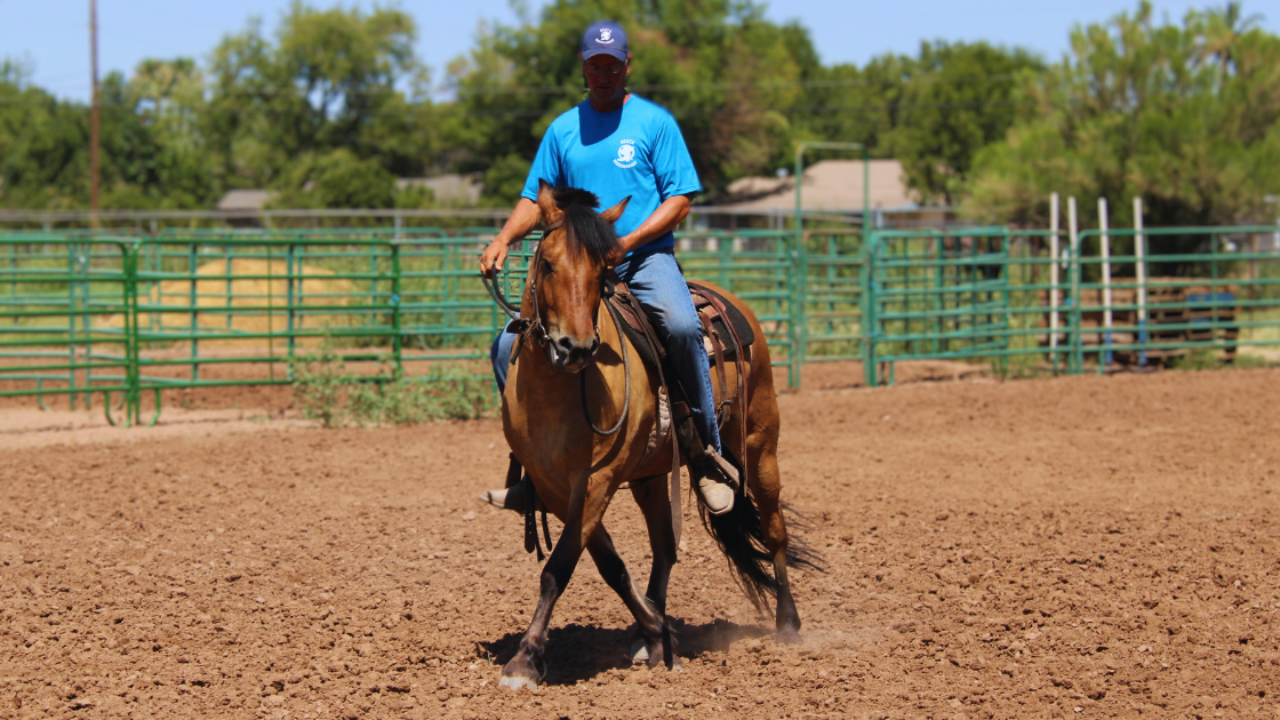Q&A: Counterflexion Conundrum
Aug 01, 2023
Q: Do you have any tips on counter flexion? I’m struggling to understand how to ask/cue the horse and once I think I’ve got it, he goes for a direction change and I’m unsure how to correct it
A: Counter flexion, in this question, most likely refers to the counter bend horses can be asked to do as an agility, flexibility, or lead changing exercise. The concept of “counter flexion”, “counter bending”, “counter arcing”, or “reverse arcing” is explained as follows:
Normal bend, or flexion, is when a horse bends in the shape of a “C” with the nose and hip to the inside of a circle and the shoulders to the outside. A counter bend or counter flexion is when the rider asks the horse to tip the nose to the outside of the circle and pushes the shoulders to lead into the inside of the circle, effectively flipping the “normal” C-shaped pattern in the first place.
First of all, before you teach counter flexion, your horse should at a minimum be good at backing, lateral flexion, hindquarter and forequarter yielding, and sidepassing under saddle. You probably also want to ensure your horse can ride in the direction and speed you ask, with the ability to stay on the fence and straight in any location in the arena when asked to go forward at a walk, trot, and canter. One-rein stops are also important to achieve from any speed before I’d suggest working on this more advanced exercise, the counter flexion.
One way I begin to teach counter flexion during riding after the basics is to start by walking along my arena fence and then asking my horse to move his shoulders off the fence. Let’s imagine I’m riding in a left-turning arena pattern along the fence, with the fence on my right side. I will tip the nose towards the fence with the outside rein (right) and guide the shoulders off the fence with the inside rein (left). The fence helps avoid the problem of your horse turning, in this example, to the right by blocking forward movement to the right.
At the same time I apply directional pull with the reins, I will press with my right calf, heel, or spur, whichever is necessary just behind the girth at Position 1, effectively pushing the shoulders to the left. Once my horse moves his shoulders off the fence, I will allow him to straighten up, with shoulders directly in front of hips. I guide him back to the fence and repeat. Once my horse can do that effectively, I will start moving the shoulders in the other direction after moving off the fence. For example, once I move the shoulders off the fence to the left, and then straighten out, I will tip the nose left, guide the shoulders to the right with my right rein, and push them to the right with my left leg at Position 1 until I reach the fence.
Now that I can move the shoulders off the arena fence and then back to it at a walk, I will practice at a trot, basically off any straight line I put my horse on, even in the middle of the arena. Finally, I will begin to ask for shoulder-first circles, which are the counter flexion, counter bends, counter arcs, or reverse arcs I believe you are looking for. If my horse can handle a walk in a circle, then I work for a trot.
As I understand your question, your issue of your horse changing directions when you are asking for a counter flexion to one side refers to your asking for a counter arc to the left for example, tipping the nose to the right and guiding with the inside (left) rein and pushing with the outside (right) leg, the shoulders to the left, only to have your horse start to go into a normal arc right circle. After building the foundational blocks of the counter arc, if this issue still occurs, you are probably tipping the nose too far to the outside and not guiding enough to the inside with the other rein, causing your horse to follow his nose to the right.
Make sure to watch our videos in the Reata Horsemanship section about counter arcs and how to build up to creating the perfect counter arc movement. Thanks for the great question!
